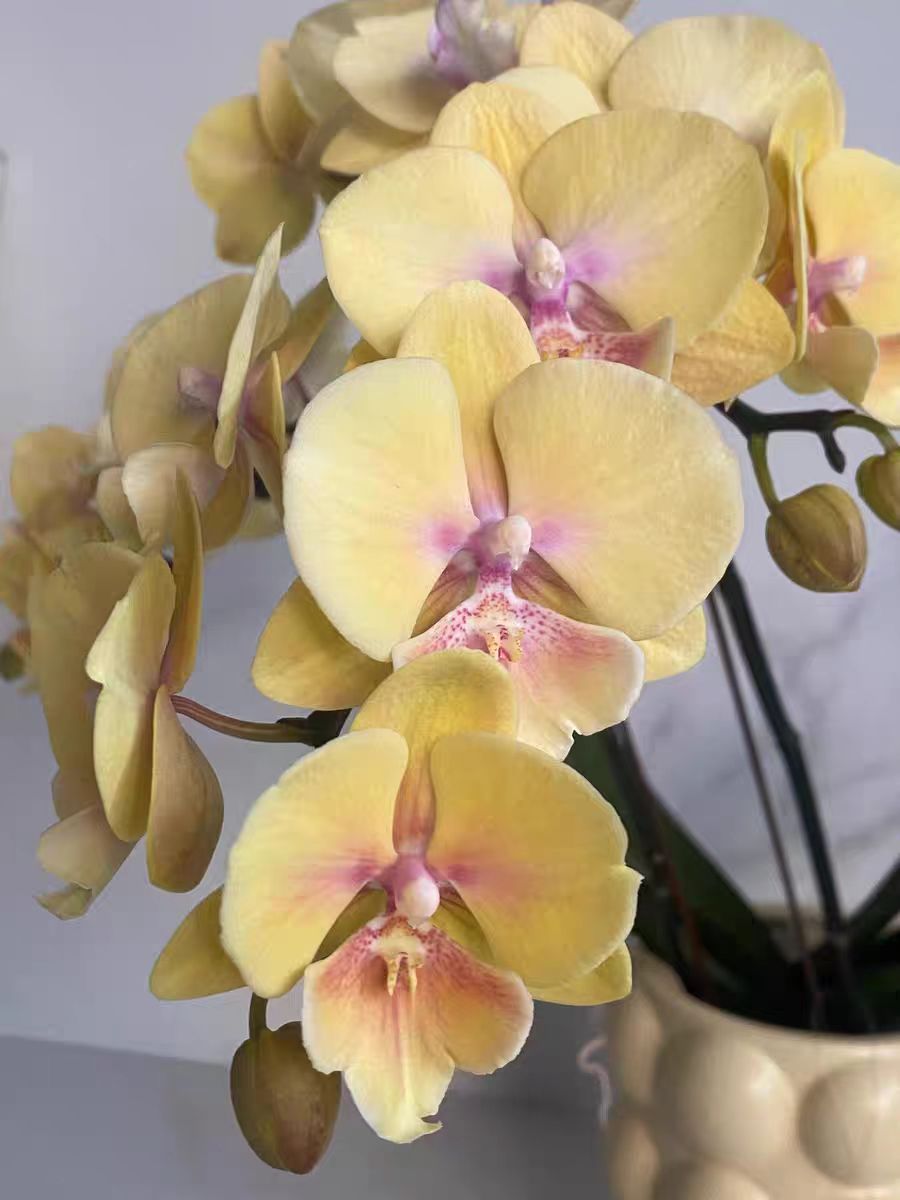Phalaenopsis has emerald-green and thick leaves, which are essential for supporting its elegant flower posture. However, as a flower sensitive to light, its leaves are highly prone to sunburn when exposed to direct strong light, leading to yellowing and withering. This not only affects the plant's appearance but may also endanger its health. Timely and scientific remedial measures can effectively help the plant recover once sunburn is detected.
To determine if a phalaenopsis is sunburned, observe the leaf symptoms. In the early stage, irregular light brown or grayish-white patches appear on the leaf surface, losing their original luster. As the sunburn worsens, the patches gradually expand and darken, with leaf edges curling and withering. In severe cases, the entire leaf turns yellow and falls off. If these symptoms are observed, immediate remedial actions are required.
Once sunburn is confirmed, the top priority is to quickly improve the lighting environment. Immediately move the plant to a well-ventilated area with soft diffused light to avoid further 暴晒 (direct sunlight). For example, place it 1-2 meters away from a south-facing window indoors, or use a shade net to block 50%-70% of the light intensity, creating a relatively mild lighting condition to prevent secondary damage.
For sunburned, yellowed and withered leaves, careful handling is necessary. If only part of the leaf is sunburned, use a sterilized sharp scissor to carefully trim off the withered part, preserving the healthy tissue. After trimming, apply a fungicide such as carbendazim to the wound to prevent bacterial infection. If the entire leaf is completely yellow and withered, cut it off at the base to reduce nutrient consumption and promote the plant's recovery.
In addition to adjusting light and trimming leaves, proper water management is crucial for sunburned phalaenopsis. The plant is fragile after sunburn, so avoid overwatering—keep the growing medium slightly moist. Overwatering may cause root hypoxia and rot, hindering recovery. Instead, spray water 2-3 times a day around the plant to increase air humidity and create a suitable microenvironment, but avoid letting water droplets stay on leaf wounds for long to prevent diseases.
Nutrient supplementation is also key to promoting recovery. Do not fertilize the sunburned plant in the short term. Wait until new leaves emerge, indicating basic recovery, before starting fertilization. Initially, use diluted foliar fertilizer, such as a 0.1%-0.2% urea solution, sprayed every 7-10 days to quickly replenish nutrients. Once the plant grows steadily, switch to normal root fertilization with a balanced nitrogen-phosphorus-potassium compound fertilizer, applied thinly and frequently to promote robust growth.
If the phalaenopsis is severely sunburned, with 大量 (numerous) withered leaves and a wilted plant, consider removing it from the pot to check the roots. If the roots are also damaged by high temperature (blackened or rotted), take the plant out of the pot, remove old growing medium, rinse the roots with water, trim off rotted parts, soak the roots in a 1000-fold diluted carbendazim solution for 15-20 minutes for disinfection, then repot with clean, breathable growing medium. After repotting, strictly follow the above light, water, and nutrient management methods and be patient as the plant recovers.
Prevention is better than cure. Understanding the phalaenopsis' light requirements in daily care is fundamental to avoiding sunburn. As a semi-shade plant, it needs 4-6 hours of diffused light daily. During high-temperature and strong-light summer days, ensure proper shading. Only by mastering correct maintenance methods can phalaenopsis stay free from sunburn troubles.
How to Deal with Sunburned, Yellowed and Withered Leaves of Phalaenopsis?

Share with
Tagged in :




Leave a Reply